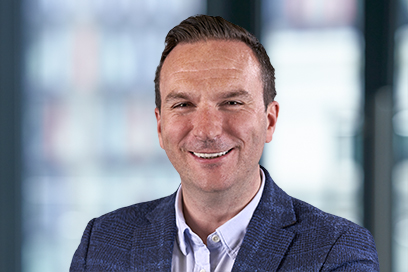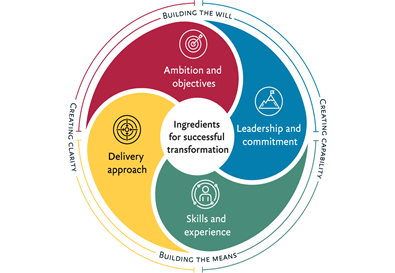People can be the greatest champions or the biggest threats to change in an organisation. So, getting them to buy-in and positively contribute to a change programme is crucial. After all, they are the ones who, day-to-day, will be delivering new and improved service on the front-line or running a streamlined back office.
But how do you go about putting people at the heart of this change? Do you involve them in determining how you change, or do you only communicate with them once you have your whole story straight? What is the people agenda that needs to be addressed, and who is responsible for driving it?
The role of business leaders in engaging people on change
Change in organisations invariably affects peoples’ roles, working relationships, career paths, and often their personal lives. Naturally, people contemplate change with trepidation. However, people are also de-motivated by uncertainty and drift so will usually rally behind strong leadership with a clear direction, even if their personal outcomes are unclear.
Putting people at the heart of change is not about going soft. It’s about leaders making choices about what’s right for the business, taking due account of the interests of both their shareholders and their people, and setting out the new context in which decisions around policy, organisation, operations and staffing will be made.
The sooner that leaders start this communication activity and the more transparent and open they are, the more likely people will feel engaged in the change process. Crucially, it’s then about the leadership sticking consistently to this story – both publicly and privately – as the change journey progresses. And ultimately, it’s about leaders embodying and adopting the change themselves, acting as role models and demonstrating their personal commitment to doing things differently.
Involving the right people at the right time
Once direction has been set, opportunity abounds for building ownership amongst managers and staff.
Inevitably, relevant regular communication is a vital element in any significant change initiative, but it’s important to remember that communication is not a one-way process. Creating public opportunities for input, listening effectively and acting on the feedback received is an incredibly powerful way of building engagement across the organisation.
Building real ownership, however, will need more than just executing on a good communications plan.
Ownership comes from active participation, from a sense of involvement, of being ‘in it together’.
Getting the right people involved in specific parts of the change process is therefore key, whether this be detailed design or piloting of job roles, processes and systems. This involvement needs to offer people a genuine opportunity to shape the outcome – it can’t just be a token gesture or ‘rubber stamping’ affair. And just to be clear, the ‘right people’ for these jobs are often high performer or high potential individuals; people who are widely respected for their knowledge or for embodying the spirit of the organisation. These are the people who are in demand, who can’t be allowed to give up their current role, but if organisations are really committed to change, they need to find a way of squaring this circle.
One essential aspect of involvement is decision making. Good governance should ensure that key project and change decisions are made by the right group of senior stakeholders at the appropriate time. But often these decisions need to be informed by what’s happening on the ground.
For example, the best people to assess business readiness are usually in the middle management tier. They understand end-to-end business processes far better than senior management and are close enough to their teams to judge if the business is ready to adopt the change. Excluding them from the decision-making process may work from a pure governance perspective and give the impression that the leaders are leading, but it won’t build the sense of management commitment to the change that can be so crucial in steering the business through the often bumpy post-implementation period.
The contribution of HR towards change management
There are differing views on the degree to which HR should drive the people engagement and change process.
Much depends on the culture of the organisation and the capability that sits within the HR function itself, but leadership of the change, whatever it may be, must lie first and foremost with senior management and line managers.
Responsibility for this cannot simply be devolved on the basis that it is a ‘people-related’ issue. However, there are nearly always crucial areas of business change where HR must be actively involved.
For example, making changes to remuneration policy may be a key lever to enable realignment of the organisation around new strategic objectives. Processes around selection, training and recruitment for new roles may need to be designed. And, of course, changes to roles and organisation structure need to be carefully and thoughtfully managed. In all these areas, HR has a key leadership role to play as well as providing functional expertise.
Engaging people on change: finding the right balance
Like so many things in business, delivering change successfully is a balancing act.
Leaders need to know when to be decisive and when to listen.
Communication should be regular and relevant but mustn’t drown people with information. Governance needs to be effective, but not exclusive. And whilst HR will need to lead on many people aspects, it can’t ultimately be responsible for delivering the change.
As failed change efforts demonstrate all too clearly, insufficient engagement and involvement is likely to result in resentment and resistance, whereas a full-on but unfocused approach will probably leave people confused and overwhelmed; but in both scenarios the change is unlikely to land in the business effectively.
However, getting the balance right, knowing when and in what ways to put people at the heart of change, dramatically increases the likelihood of creating genuine change that really lasts.











